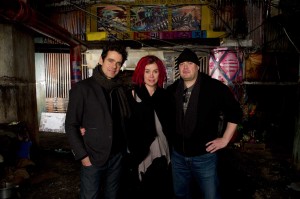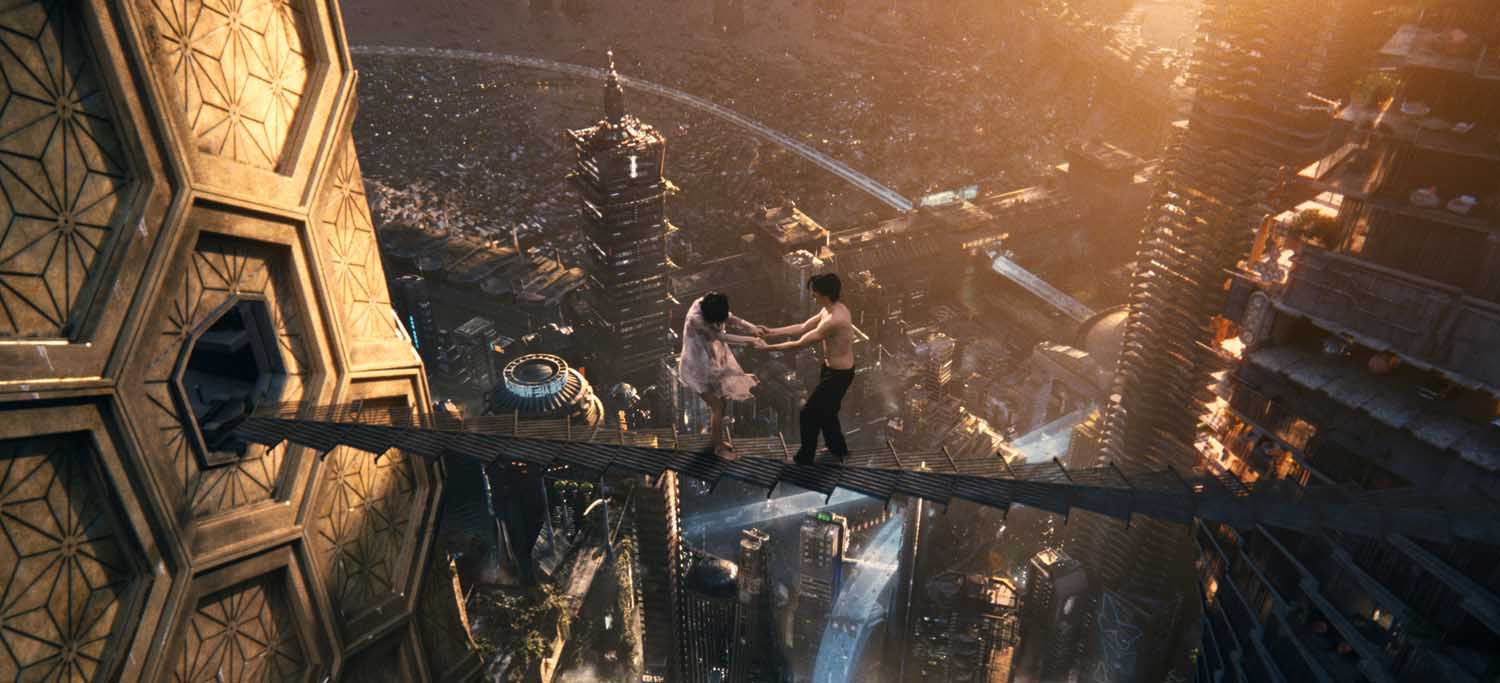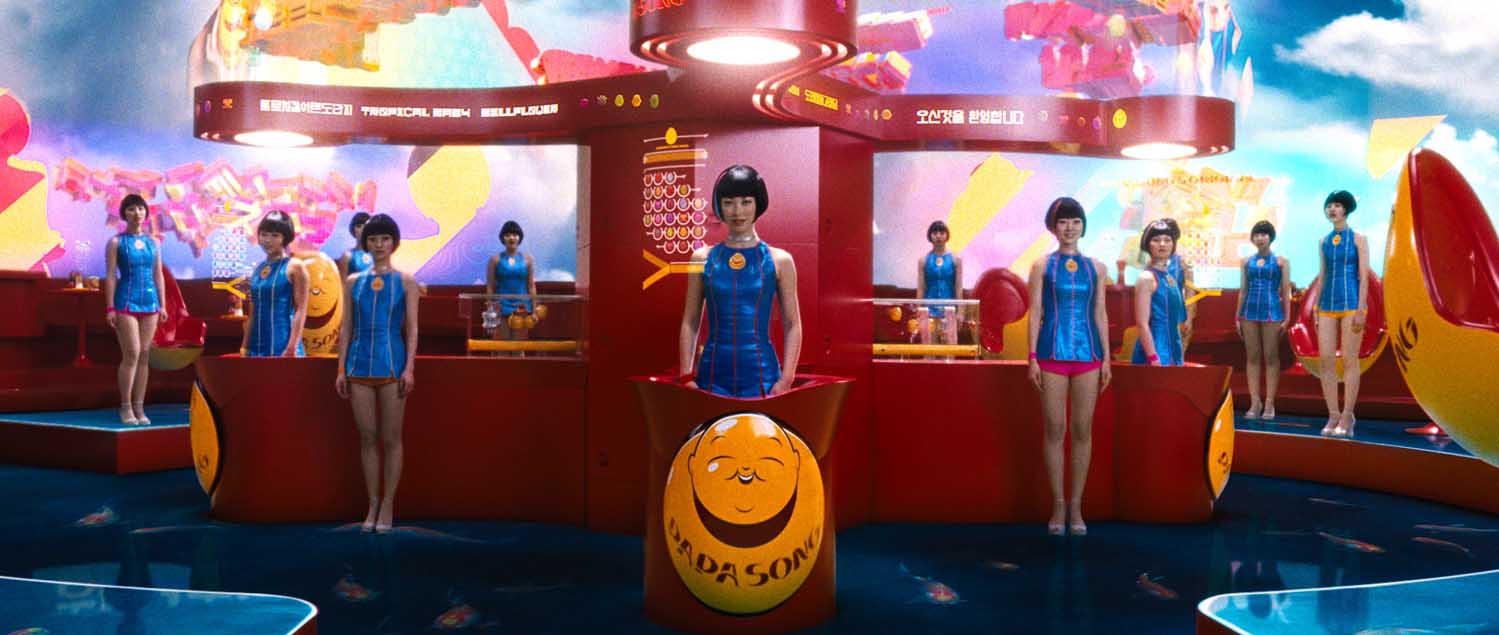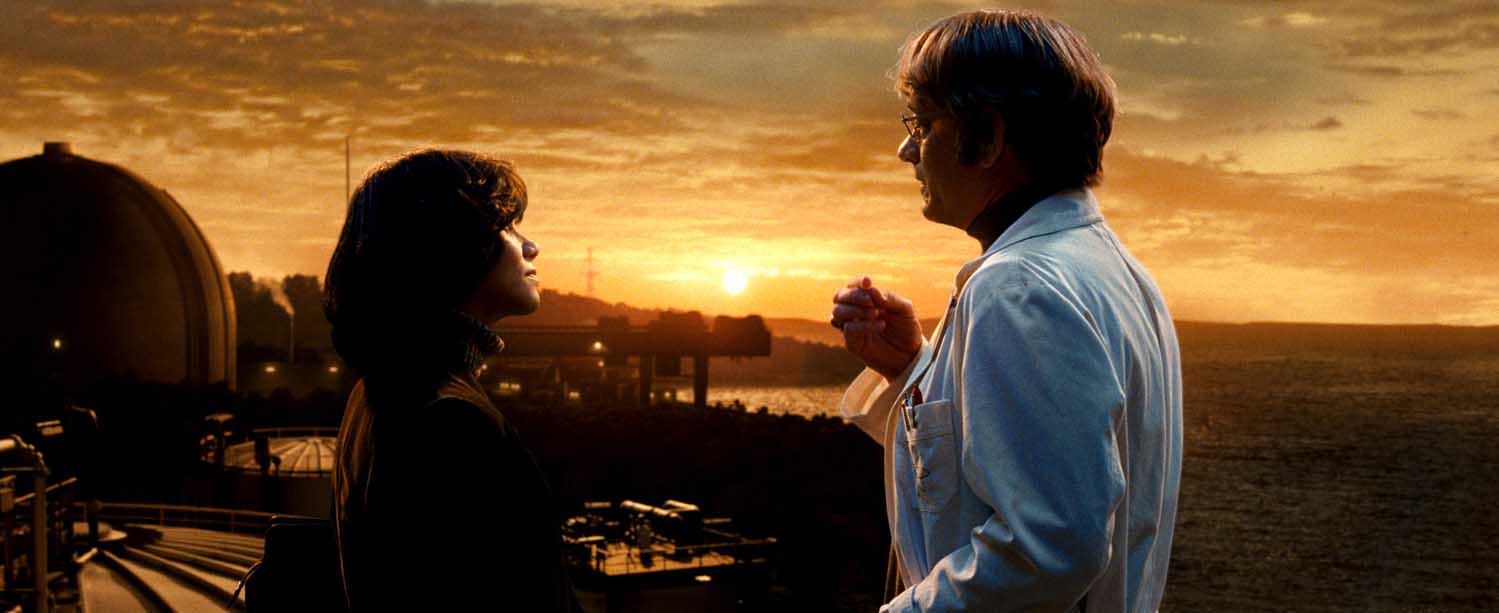
The idea of three directors coming to consensus is hard to fathom, but Andy Wachowski, Lana Wachowski and Tom Twyker have forged a new paradigm, not only for filmic structure, but also for collaboration. “The team got together out of a desire to work together,” comments Andy. “Maybe there was some meridian running through the planet from Chicago to Berlin that psychically we were in tune.”
Twyker, who is also credited as a composer on Cloud Atlas along with Johnny Klimek and Reinhold Heil, had composed music on Matrix Reloaded and Revolutions, also directed by the Wachowski siblings. However, their worlds as directors were very insular, with each director being isolated in his own bubble when making a movie. That, along with conflicting production schedules, made it hard for them to connect, even in between projects. They decided that the only way they could get to know each other better and enjoy their “love affair” – as Andy Wachowski describes the relationship – was to work together.

Warner Bros. had acquired the rights to Cloud Atlas for the Matrix directors, who began writing the screenplay adaptation in early 2009, with Twyker joining in on subsequent drafts. “We have been working on the thing four years,” shares Lana. “Everything was complicated, but it was the complications that drew us and excited us. In the complications we thought there was the greatest potential for the project. We wanted to play together and we needed a box that was big enough.”
Other than cinematographer John Toll, who came highly recommended, all of the crew keys, including Twyker’s cinematographer Frank Griebe, had worked with at least one of these three directors for a long time. German editor, Alexander Berner, was responsible for intercutting the multiple plot lines into a coherent whole. He had worked with Twyker on several films and was chosen to be the sole editor. The transitions between sequences formed a cohesive glue that allowed the film to flow from one story line to the next. Although some transitions that facilitated the weaving of the stories existed in the script, many more were enacted in the cutting room as the film was polished.

“It’s the difference between a hammer and chisel and 120 grit sandpaper,” Andy said. “It’s a process. We went from the scene cards, to the script, to the prep, to the shooting, to the final sanding of the piece in editorial. It was constantly evolving. We didn’t just shoot chronologically and then see what we had in the editing room. A lot of it was pre-planned. As directors, the bread and butter of the final product are in the preparation.”
“We love figuring that stuff out, the transitions, first in the story and the script,” Lana added. “We love thinking about camera transitions.” In the way the transitions work, “they become a linguistic lexicon of grammar” for the film. “They become a Christmas present that you open as you are experiencing the film. Alex is a big part of that. He was probably one of the few editors that could keep up with us. Andy and I are naturally fast, without adding a third person in the mix.”
The directors worked simultaneously shooting in Edinburgh and Germany sending in dailies from two main units, burying editorial in footage. In post, the editor worked with all three directors in the room, 12 hours a day. “Three directors never really get tired of new ideas,” explains Twyker. And according to Lana, “Not only did we cut every single frame together, but we all had to love every cut.”

Post proceeded quickly. The team had a directors’ cut within six weeks. They started showing the film to people within eight weeks. By 10 weeks the story was not far from picture lock, with some tinkering to be done as the time-consuming visual effects came in. One thing that they all discovered in the editing room was that something that might look good on the page tonally, once shot, could form a chemistry that was quite explosive. “Going from slapstick to a heart-wrenching tragedy, didn’t work,” Andy said. “Even though there might have been some really interesting dialogue connection that we typed out on the page and thought we were geniuses, it didn’t translate, and so there were puzzle pieces that had to move around within the overall mosaic.”
The team had one scary moment when they watched their first polished cut. They had done some experimenting and the version included Twyker’s music and some visual effects. They went to a theater to watch the whole film, when previously they had only watched reels. “We were shocked to discover that the instinct that film can go faster than reading, that cinema could sorta rush along and people would see the image and it could be digested faster… it was weird, and it was too fast,” explained Lana.

“It was like a jackhammer, literally pounding you in the head and we were just bleeding coming out of the theater,” Andy continues. “And we’re like, ‘Okay, maybe we need to slow it down a little bit.'”
The filmmakers concur that Cloud Atlas is a film that should be viewed more than once. The new and complex structural form begins with the introduction of the multiple story lines as if they were characters themselves, and continues with the mosaic pattern established at the beginning of the film – an ensemble of stories, treated much like an ensemble cast.
“That has been a really big effort for us,” shared Twyker. “In the editing, even though you have to get used to the particular approach of the film, there is a moment when you actually decipher it and it becomes easy. There is a flow. We always said we are not making six movies. We are making one movie. They all unite into one tale. After an hour in the movie, you can cut from wherever you are to another segment and not feel like you are jumping out of any train of thought. Even though it is not linear within the idea of time, it is linear as related to a train of thought. It creates its own logical inner connectiveness that works.”
Lana notes that the filmmakers even warn the audience of the time-bending journey to come when Cavendish (Jim Broadbent) says, “Well, my extensive experience as an editor has led me to a disdain for flashbacks and flash forwards and all such tricky gimmicks. If you, dear reader, can extend your patience for just a moment, you will see that there is a method to this tale of madness.” After laying out the storylines in a chronological order, held together by the dream sequences, they then set out to break the linear pattern, embarking on a filmic narrative that explores the past, present and future as integral parts of the human experience.

“It was not just combining stories,” Twyker continued. “It was connecting things and people, like us three being the role model for the entire crew idea.” The directors had to convey their visions to the dual crews while keeping the one movie idea intact. According to Twyker, the production design by Hugh Bateup and Uli Hanisch was the key to differentiating the different storylines. Each time period could have a look befitting each particular story, but they all needed elements that would connect them.
“I remember John saying at the very beginning that the design was going to make a huge differentiation, but we all felt that we didn’t want to accentuate that because we were always thinking that we wanted to be able to cut from segment to segment fluidly,” Twyker said. “If it were jumping because of the format or the filtering or a specific way of lighting, it would jar. We wanted it to be similar, so it was coming from the same source of esthetics.”
“It would have been an obstruction,” Lana continued. “In the end you wanted to weave them all together. The more wildly different that you chose to execute each of the six stories, the more you exaggerated their separateness, the harder it would have been to weave them.”
“So we went the other way and we tried to integrate more,” Andy concluded. “We reused sets and shapes, and incorporated patterns and designs from one storyline into the next. One of the patterns on Ayrs’s (Jim Broadbent) sleep coat is the same pattern that is on Zachry’s (Tom Hanks) tattoos.”
Wanting to incorporate the idea of this kind of eternal reoccurrence, they took a similar thematic direction of repeating motifs with the costumes by Kym Barrett and Pierre-Yves Gayraud and the make-up by Jeremy Woodhead and Daniel Parker as well as having the cast play different characters in the various storylines. Together the departments found the essence of their craft and elevated their art above anything they had done before.
The story of the Cloud Atlas production is one of an unprecedented experience. Three directors, dedicated to collaborative input, brought together the huge filmmaking crews to create an enormous experimental playground. “All of these departments had never worked together before, and yet, they were inspired by the way we worked together,” Lana shared. “They all brought a joy and a courage and a sense of play. They helped create one of the most unusual cinematic experiments I have ever seen.”





